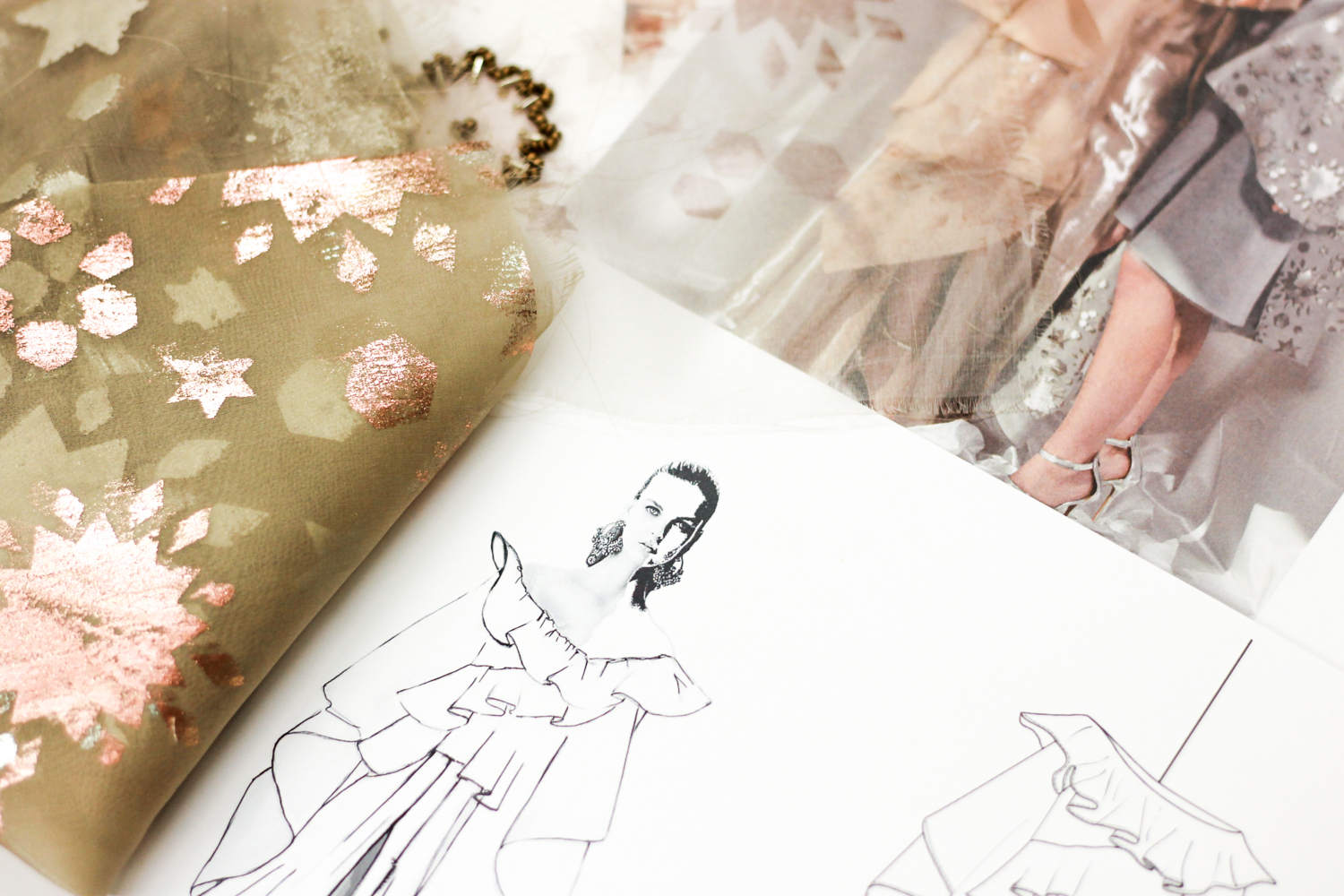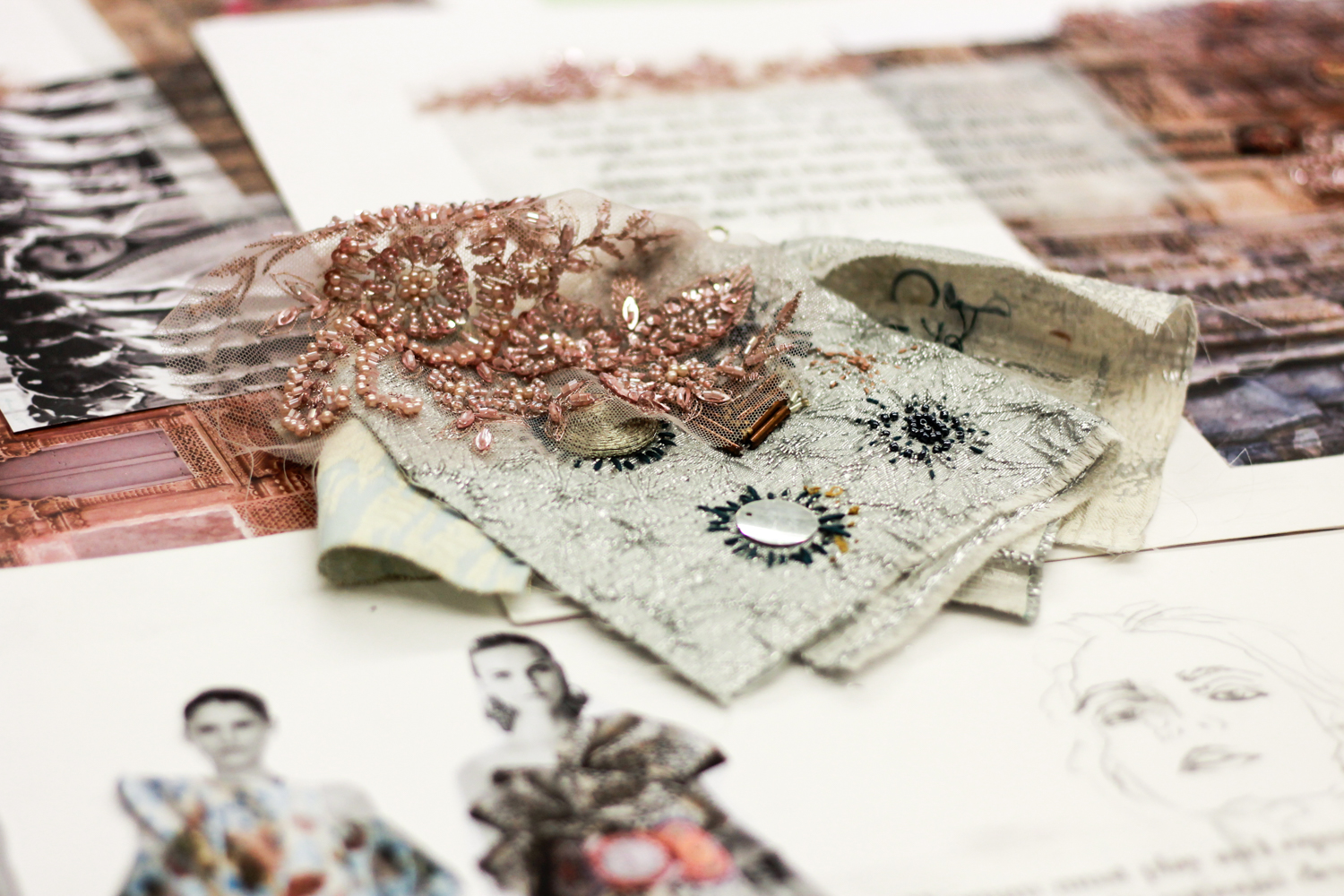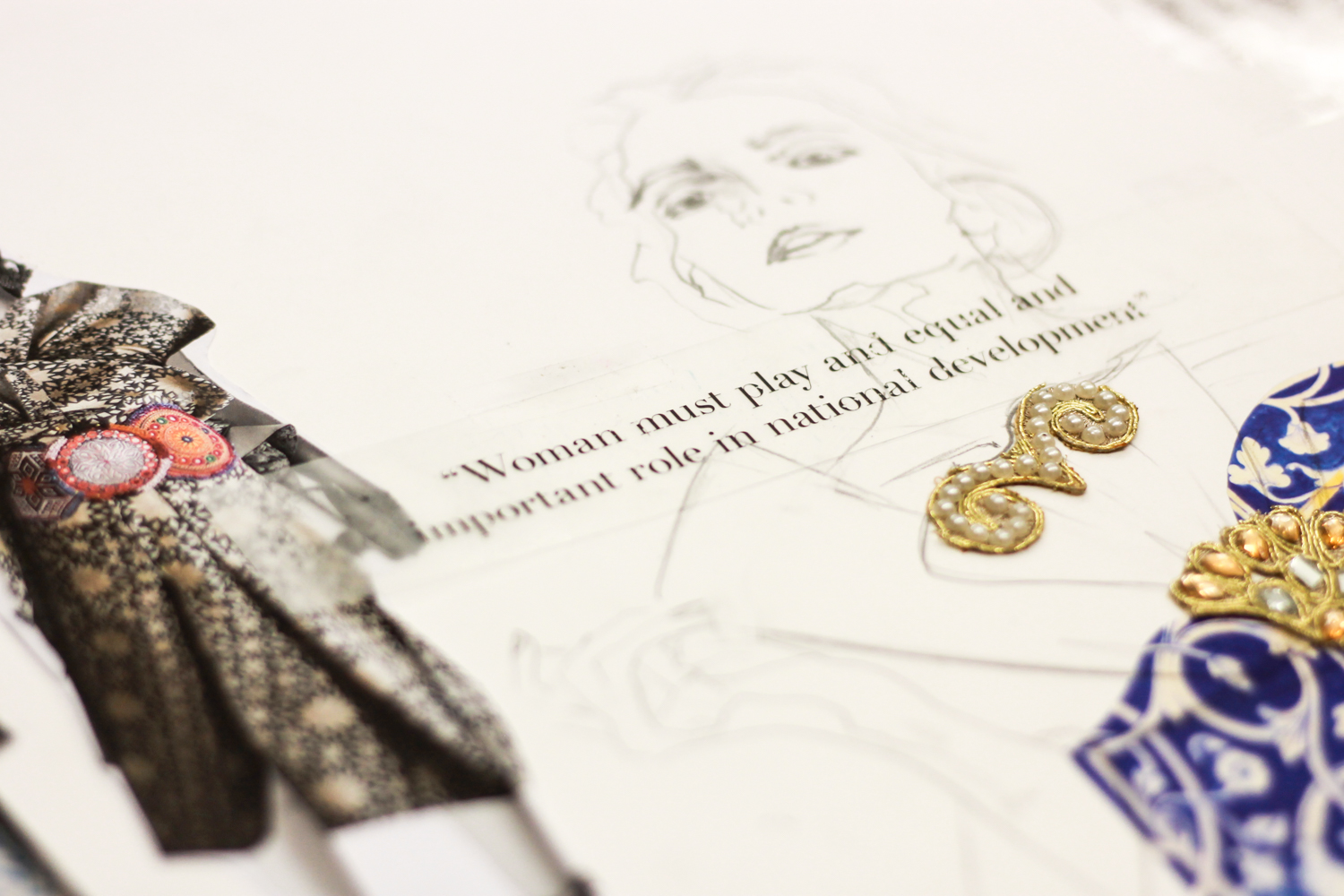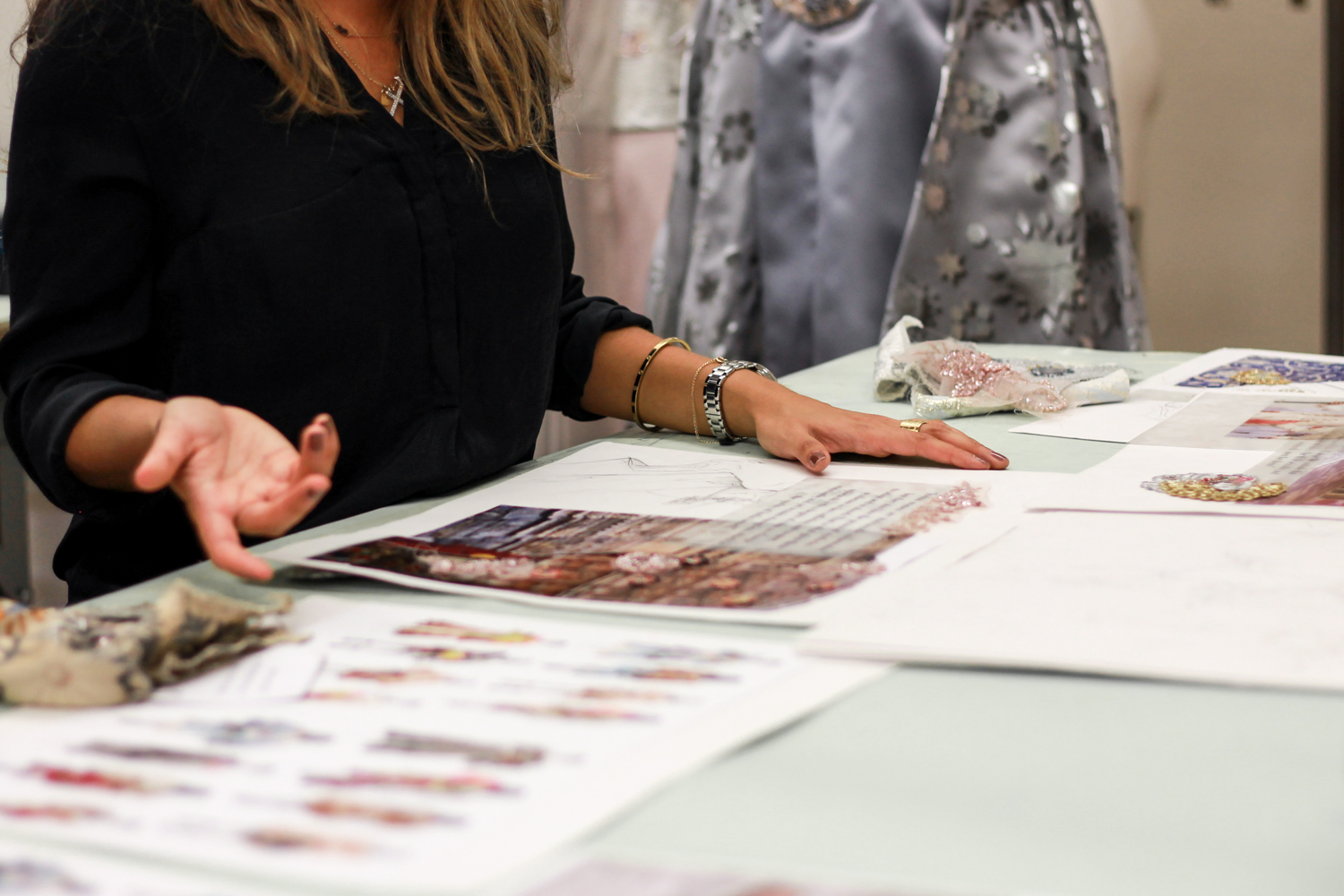After presenting her collection at SCAD FASHWKND, Estefania Alvarez shares the inspiration behind her collection, why she believes collaboration is important and advice for SCAD’s next senior class of fashion designers.
What got you interested in fashion?
ALVAREZ: Since I was a child, I have always been interested in studying something regarding design or art. I loved drawing and doing crafts. When I was around twelve, I knew I wanted to study fashion design. So back home at Cartagena de Indias, Colombia, at the age of fifteen, I started taking fashion classes, like fashion sketching and sewing.
What inspired your collection?
This collection started with my love [for] textiles. I took a trip to India; while I was in Jaipur, I was taking pictures like crazy. There, I worked with a friend who is fashion designer who was my mentor [when] I was there [and] also happens to be from Colombia. She is creating her own line and sells gems to the royal family.
The textile process, the beading, and the heritage, but also the contrast in their social classes, were my inspirations. While I was there, I was mostly attracted to the jewelry and the texture in the architecture. Mostly in [the] museums and palaces [that] they have.
[My mentor] took me to these small ateliers and I just fell in love with [their] process. When I came back, I just started manipulating the different fabrics I got there, then draping them over the dress forms, and that’s how I started to create different shapes and silhouettes for my collection.
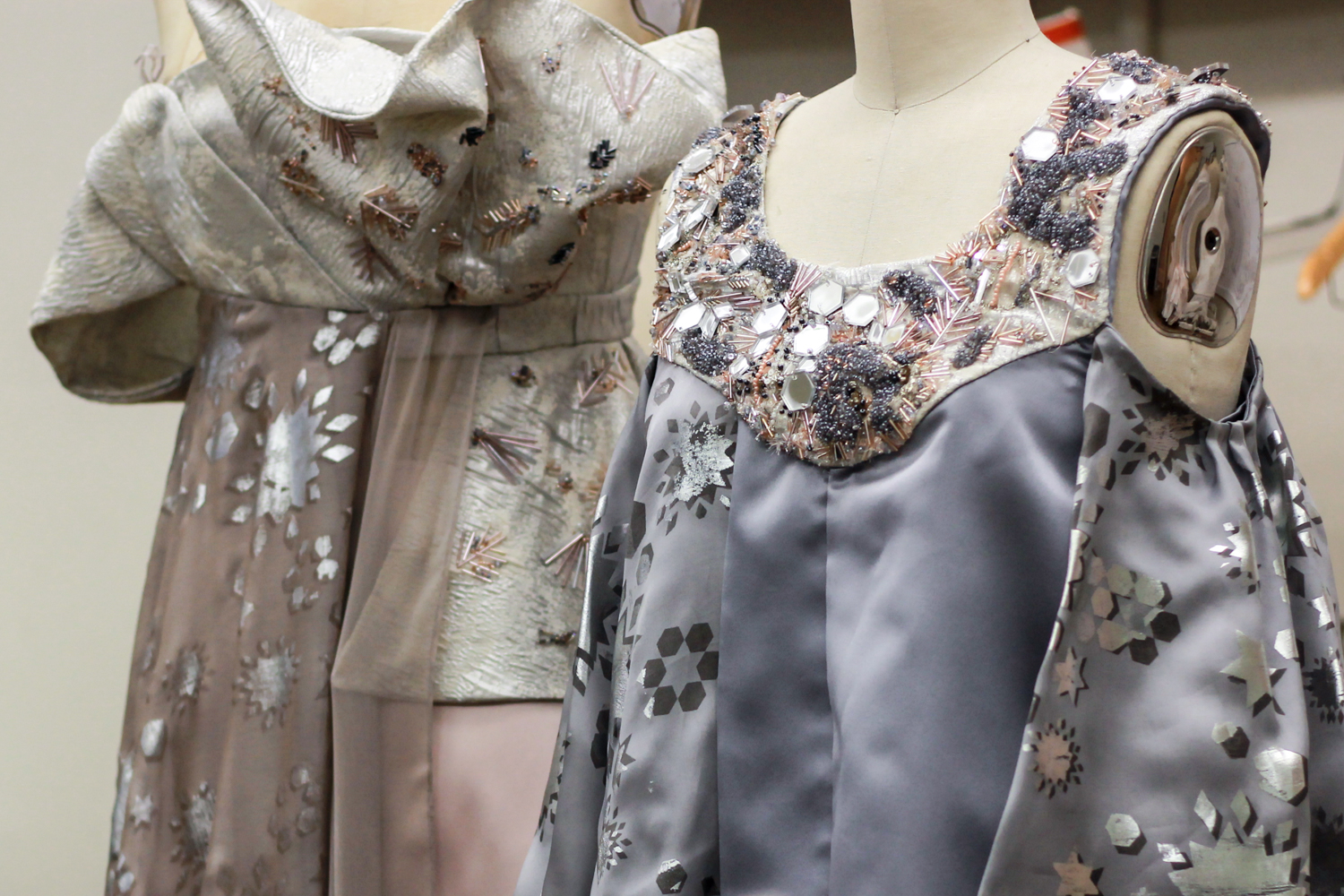
What did you want to express with this collection?
Basically I just wanted to create harmony among all the chaos I saw in India. And then my collection took its own path!
What was your experience with majoring in fibers and fashion?
It was incredible! Specially because of all the people I met.
In fibers, you don’t need to design just for fashion or interior. You just take your own path. You can take electives where you meet people with so many interests, and then you get to learn so much from your classmates because they each bring something new to the table.
And in fashion, we are all interested in the different areas like menswear, womenswear, sports, or even childrenswear, but at the end it always ends up in fashion. I guess fibers is just more broad. You can create whatever you want from natural dyes to luxury yarn for weaving.
The best thing I got from mixing my majors was getting to know all this people with different interests and from that creating an awesome time for my collection.
At the beginning, I felt that I did not know how I was going to make all these garments.”
How was the collaboration process like?
I just know that without [the collaborations], my collection wouldn’t have been the same. And they really deserve a lot of credit, I’m so glad I did it. I collaborated with two girls from fibers. Kadi Flory was my beading artist; I personally love beading but I knew I was not going to have time to do it as detailed as she did. Bailey Barrett created all the screen printing; which is hard to get, since it is all done manually [and] she was just impeccable with her techniques. And Lucia Marti [was] the jewelry designer; even though it was challenging, she loved the idea of making a bag out of nickel and silver and managed to make such incredible pieces.
What was your favorite part of this design process?
It was collaborating with different majors. The team in general was amazing from fibers, to jewelry and then [the] photographer. In this major [fashion] we don’t get to do group projects, so for my senior collection I knew I wanted to collaborate. It was also good since it helps me to feel like a leader and transmitting my ideas to these artists and creating such an incredible project. It was just an amazing experience.
I never thought I would do eveningwear, I just knew I wanted to do something feminine, elegant and playful.”
What are some setbacks you had with your collection?
Since I am so driven to textiles, the construction of all the garments was a struggle. But I had an amazing senior professor, Professor Pappas, who told me in the first two weeks of our muslin work “this is the system you will be applying, and you are going to sew like this, and construct like this.” Then it just came so natural. At the beginning, time management was a challenge for me. It was also challenging deciding what textures to use with which silhouettes, because you want to have all these elements but you need to know what to select to express yourself. It was not an actual struggle, but there are things you just learn when you get to senior.
Why did you decided to go for eveningwear?
I have always had an interest, but mainly because of my concept. Since I was inspired by all these royal family in India and all the high-quality textures, I guess that’s what shaped my collection. I am also focused on the Latin-American market and women there are elegant, feminine, and kind of conservative. All that came natural, because I never thought I would do eveningwear, I just knew I wanted to do something feminine, elegant and playful. All the textiles I am inspired by are luxurious and handmade.
How was your experience with SCAD FASHWKND?
It was amazing. It was a lot of fun and hectic. There were so many events and we had the chance to talk to so many people from the fashion industry; in Savannah, I met the ladies from Vogue Mexico and Latin-America. As a designer, it was an amazing experience to show my work and the feeling is so rewarding. The showcase in Atlanta was so different compared to what we do in Savannah. Seeing the process of how they set up, going to the Atlanta campus and meeting so many new people was truly an amazing experience.
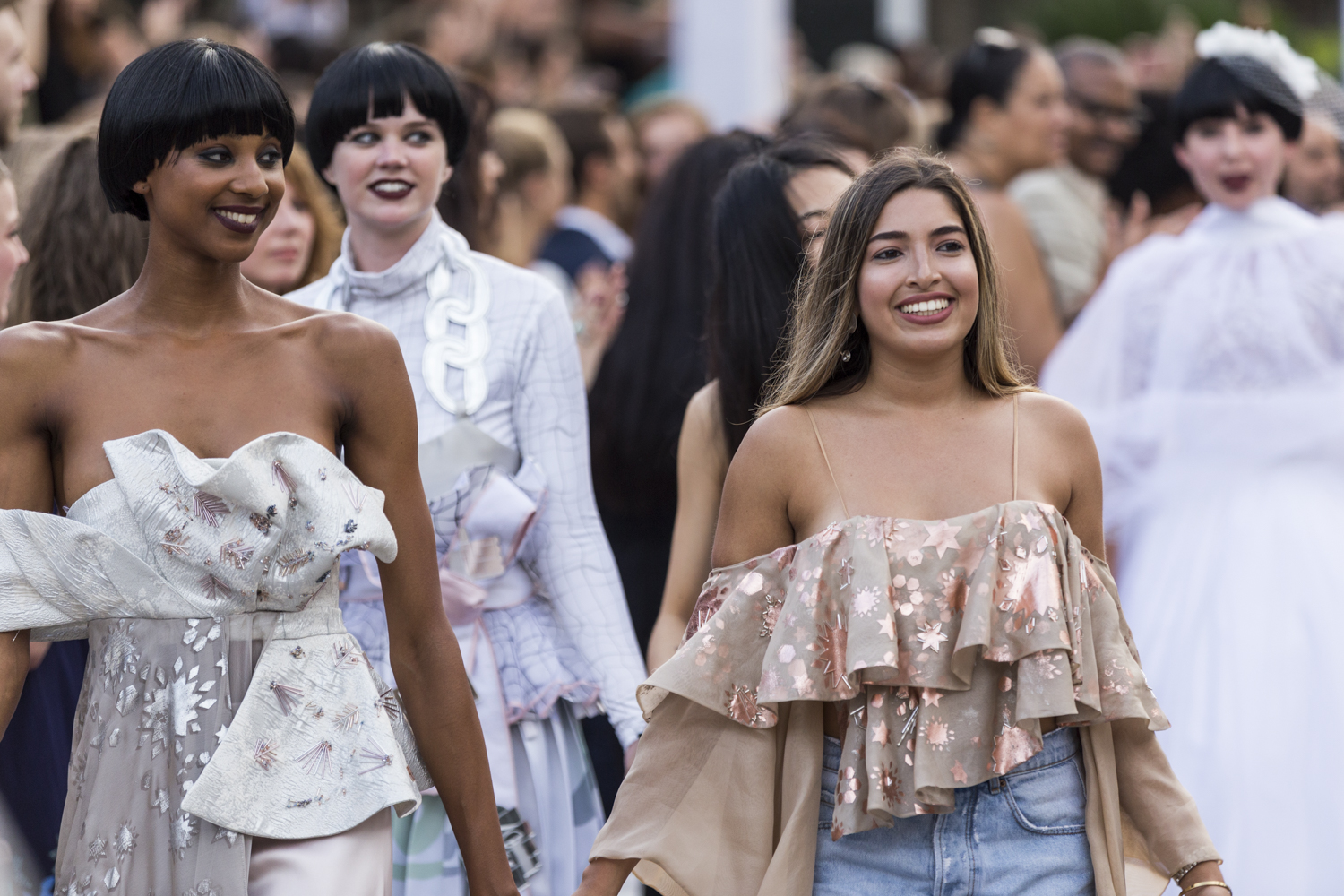
Where do you see yourself ending up?
I would like to go to the textile side of a fashion company, or work with an emerging designer rather than a corporation. I would like to be more hands on and I definitely want to learn more about the industry. I am also considering grad school in textiles. But you never know, so I am open to many options.
What advice would you share with other students in the fashion program?
Be loyal to your own style and don’t imitate. Learn how to manage your time wisely, because you will need it. Think about your customer and who is going to wear your designs. Explore different fabrics, silhouettes and colors, and take your time in your design process. Also consider collaborating, because it will make your collection much more successful, because it’s amazing to learn and it’s amazing to manage a team.
Interview by Laura Ramirez
Photography by Joselyn Dontfraid


